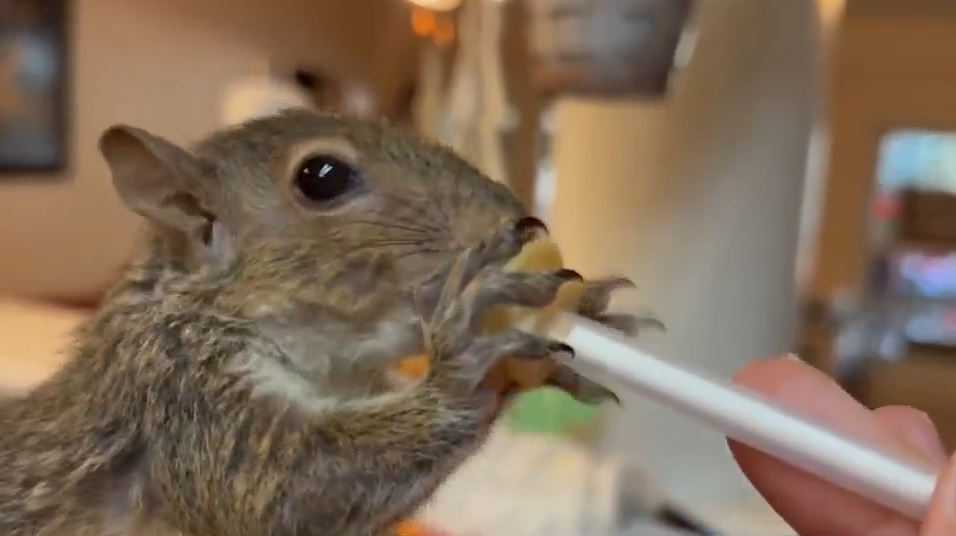Eli Francovich / The Spokesman-Review
We have a people dilemma.
That was the message Laura Prugh gained from the U.S. Park Support in Glacier Bay, Alaska, several several years ago. For Prugh, who studies human-wildlife interactions in the comparatively crowded condition of Washington, the declare seemed a little bit overstated. Right after all, only 40,000 people visit the 3.2-million-acre park per year — absurdly lower figures for any person accustomed to recreating in the Washington or Oregon Cascades, for instance.
In reality, Glacier Bay is only accessed by boat or airplane and 94{272cf403bcff3cf22e9e69771caac17f4a7e39cef36aa062899cc355f3ca53b9} of guests occur via cruise ship. Still, park assistance personnel documented expanding numbers and they desired to know how — or if — that pattern was impacting native wildlife. So Prugh, an affiliate professor in the University of Washington School of Environmental and Forest Sciences, visited.
“I was just stunned at how several individuals there were,” she claimed. “And I assumed ‘Wow, these people have definitely dropped viewpoint on what a lot of website visitors are.’ “
Nevertheless, she agreed to conduct the review. In excess of the program of two summers, she collected illustrations or photos from 40 movement-activated cameras throughout 10 web-sites focusing on wolves, black bears, brown bears and moose. She completely envisioned to obtain very little to no “change in animal exercise concerning the superior-use sites and the low-use web pages.”
She was wrong.
In a examine released this thirty day period, Prugh and her co-authors observed if humans had been current, the cameras detected fewer than five animals for each week throughout all four species examined. In most scenarios, this possible intended that animals avoided regions where humans were present. Second, in backcountry parts, wildlife detections dropped to zero just about every 7 days after outdoor recreation stages achieved the equivalent of about 40 visitors for each 7 days. The scientists notice that in some sites where by animals are additional habituated to individuals the reaction to human existence will be considerably less.
Although it is really just just one review, in 1 put, the findings have implications for recreation administration , including in Washington.
“Our analyze indicates that if individuals want to recreate and reduce their impact on wildlife, it would basically be far better to go climbing on busier trails for the reason that these web sites are disturbing wildlife in any case,” she mentioned. “I feel, regretably, there is a trade-off with the human’s knowledge and the affect on wildlife.”
A establishing field
The issue of how, or even if, out of doors human recreation of the nonhunting variety impacts wildlife is “form of an rising subject,” Prugh claimed. Even with its relative youth, many recreation ecology reports have demonstrated that animals do transform their habits in response to humans existence. Some mammals have develop into much more nocturnal, forgoing their standard daytime routines in hopes of steering clear of human presence. In Montana, wolverines and bighorn sheep avoid locations where backcountry skiers shred. Wild reindeer flee farther and for a longer time from backcountry skiers than from snowmobiles, in accordance to a different research.
That’s all very well documented nonetheless, what hadn’t been seemed at was the least threshold of disturbance or, in less complicated conditions, just how numerous individuals does it consider to send out a grizzly packing, reported Joel Berger, a professor at Colorado State University and the creator of “The Greater to Try to eat You With: Worry in the Animal Globe.”
The UW research commences to response that problem, he claimed. Berger was not portion of Prugh’s review and hasn’t achieved her, whilst he explained he is admired her investigate .
“The Prugh research supplies the initially quantitative evidence, in my perception, on responses of species of wildlife when uncovered to persons in these reduced-density conditions,” he reported.
He stated it also confirmed variation in species reaction to human activity, noting that Prugh’s analyze uncovered that moose have been additional active if persons ended up all-around, indicating the big ungulates ended up utilizing human existence as a protect in opposition to warier animals, like wolves. That is acknowledged as the human-defend hypothesis, a time period coined by Berger.
“The dilemma is, what does it acquire for animals to master?” he stated. “To be in a position to adopt this anti-predator anti-harassment disturbance method.”
In addition to those people thoughts the research also raises a conundrum for recreation planners and out of doors lovers, equally in distant and far more urban configurations.
Implications for recreation
The harmony concerning recreation and wildlife is one thing Paul Knowles, Spokane County’s park planner, considers generally.
“As a land manager you sacrifice some parts, in a perception, so that others can be principally dedicated to wildlife habitat,” he claimed.
When county planners layout and make trails they consider to include things like “wildlife disturbance buffers.” These buffers are constructed employing the finest offered science on how substantially house species need to have from humans. In an urbanized surroundings like Spokane County, on the other hand, it truly is not always possible to include things like that place.
Anecdotally, at the very least, Knowles said he is heard “time and time once again” that after a house is obtained by the county and produced for recreation, wildlife sightings plummet.
“We purchase these conservation parts for various applications and many rewards, which include recreation,” he explained. “So we have to come across a way to equilibrium those out. It can be tricky.”
Which is the much larger issue, Prugh claimed. She has no drive or intention to notify people they should not hike. But recreationists really should be informed that their exercise — no issue how tranquil seeming — has an effect on wildlife.
“It can be not that men and women must prevent recreation,” she explained. “But what is the best way to harmony these trade-offs?”
